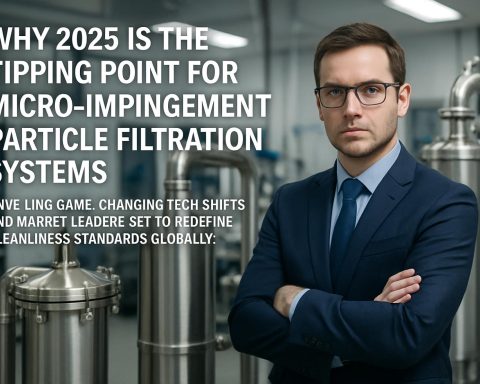- Second-life EV batteries offer a sustainable alternative for energy storage, retaining up to 80% of their original capacity, making them viable for BESS applications.
- Battery energy storage systems (BESS) play a critical role in the renewable energy transition, smoothing out demand peaks and enhancing grid stability.
- The energy storage market is experiencing rapid growth, with projections indicating an increase from $58.9 billion in 2024 to $204.8 billion by 2033, driven by both new and second-life batteries.
- Repurposing retired EV batteries advances the circular economy and reduces reliance on environmentally costly recycling processes.
- Second-life BESS enhance energy security, allowing regions to reduce dependence on foreign energy sources by leveraging local renewable resources.
- Utilizing second-life EV batteries combines economic benefits with ecological responsibility, offering a sustainable path for energy storage innovation.
Manufacturing new batteries for energy storage might seem logical, but a superior alternative already exists, harnessing the untapped potential of second-life electric vehicle (EV) batteries. As the globe pivots toward renewable energy, reimagining how we store that energy becomes crucial.
The sight of sprawling battery energy storage systems (BESS) dotting the landscape has become increasingly common, signaling a critical shift in how we conceive energy storage. From powering EV charging stations in grid-constrained areas to optimizing massive solar and wind farms, BESS are the silent champions of the renewable revolution. These systems hoard surplus energy, waiting for the precise moment when demand peaks, essentially safeguarding our electric potential from grid instability.
Global demand isn’t slowing. Market insights firm Dimension Market Research projected that the energy storage market would swell from $58.9 billion in 2024 to an impressive $204.8 billion by 2033. In the U.S. alone—a major player in this high-stakes arena—the market could surge beyond $70 billion within a decade. Europe mirrors this growth with an expected leap to a total installed capacity of up to 135 GWh in just four years.
Much of this growth has been fueled by brand-new batteries. But with millions of EV batteries approaching the sunset of their road-worthy lives, there’s mounting evidence that these still-powerful energy stores could have a second act.
What makes second-life EV batteries so compelling? For starters, they retain up to 80% of their original capacity—a latent powerhouse ready for repurposing. Connected Energy, pioneers in this space since 2010, attest to their viability. By interlinking these robust units into sophisticated systems, they create efficient BESS ready to serve everything from rural charging stations to colossal utility grids. Designed to withstand the rigorous demands of automotive use, these batteries stand firm under less taxing second-life roles, adhering to the pinnacle of safety standards.
Beyond their technical prowess lies their strategic advantage in energy security. The Ukraine conflict starkly demonstrated Europe’s vulnerability to energy sources overseas. Second-life BESS offer a buffer, allowing nations to pivot away from foreign reliance, leveraging local renewable sources instead. The International Energy Agency notes that Europe alone boasts a staggering reservoir of over 500 GWh in retired EV batteries—more than sufficient to support regional BESS needs.
Critically, these second-life solutions advance the circular economy. As analysts from McKinsey foresee the number of retired EV batteries skyrocketing—to 800 million tonnes by 2025 and exponentially more thereafter—the environmental stakes rise. Each battery repurposed delays the need for recycling, which is not only environmentally costly but also industrially limited; global recycling capacity can’t keep pace with looming demands.
In offering a second life to EV batteries, we add newfound value to dormant assets, transforming liabilities into treasures. When recycled materials become refined and cost-effective, this strategic delay buys time—halcyon days for more sustainable solutions.
The message is clear: By embracing second-life EV batteries, we harness a sustainable energy future, merging economic viability with ecological responsibility. In this dance of innovation and conservation, the batteries of yesterday fuel the dreams of tomorrow, redefining not just energy storage but the potential of energy itself.
Unleashing Hidden Potential: Second-Life EV Batteries Power the Future
Second-Life EV Batteries: The Future of Energy Storage
As the world shifts towards renewable energy, the role of Battery Energy Storage Systems (BESS) becomes increasingly vital. These systems are pivotal in stabilizing power grids, accommodating the intermittency of solar and wind power, and ensuring energy security. Among the burgeoning advancements in this field, the use of second-life electric vehicle (EV) batteries stands out as an ingenious solution to the surging energy storage demand.
The Compelling Case for Second-Life Batteries
Extended Lifecycle: EV batteries, even after their automotive lifespan ends, retain up to 80% of their storage capacity. This significant capacity makes them ideal for less demanding roles in BESS, providing a cost-effective and sustainable solution to generate new energy capacity without creating new waste.
Environmental and Economic Benefits: Repurposing retired batteries supports the circular economy by mitigating waste and reducing the need for new raw materials. It delays the recycling process, which is both environmentally challenging and currently unable to meet future demands. With an anticipated surge in retired EV batteries to around 800 million tonnes by 2025, finding ways to extend their utility is crucial.
Energy Independence and Security: The war in Ukraine underscored Europe’s reliance on foreign energy resources. Second-life BESS can make national grids more resilient by utilizing local renewable sources, thus diminishing dependency on international energy imports.
Market Trends and Predictions
The global energy storage market is poised for exponential growth. Dimension Market Research forecasts this market growing from $58.9 billion in 2024 to $204.8 billion by 2033. In the United States alone, this industry could surpass $70 billion within a decade. Europe anticipates installing up to 135 GWh by 2027, reflecting similar upward trends. Such market dynamics highlight the critical need for innovative energy storage solutions like second-life batteries.
Real-World Applications and Innovations
Grid Support and Stability: Second-life batteries can serve in grid-constrained areas, enhancing the stability and reliability of power supply during peak demand periods.
Renewable Energy Optimization: They efficiently store excess solar or wind energy, releasing it when the generation is low or demand is high, thereby optimizing renewable energy usage.
Rural Electrification: In remote areas, these BESS can provide reliable energy supply, supporting local economies and improving quality of life.
Pros and Cons Overview
Pros:
– Cost-effective compared to new batteries
– Environmentally sustainable
– Supports energy security and independence
Cons:
– Limited by original battery condition
– Lifecycle is shorter than new batteries
– Requires robust regulatory frameworks for safety and efficacy
Expert Insights and Recommendations
Utilizing second-life EV batteries should be a key facet of a broader strategy to enhance energy storage infrastructure. Governments and energy companies should prioritize investment in repurposing facilities and establish clear regulations and standards to ensure safety and performance.
Actionable Tips
– For Investors and Companies: Look at partnerships with EV manufacturers for early access to retired batteries.
– Policymakers: Develop comprehensive frameworks that incentivize the adoption and standardization of second-life battery systems.
– Consumers and Communities: Advocate for and support local renewable projects that integrate second-life battery solutions.
To learn more about the potential of second-life EV batteries and their role in sustainable energy storage, visit International Energy Agency and McKinsey & Company.
By leveraging both the economic and environmental benefits of second-life EV batteries, we can pave the way for a more sustainable and resilient energy future, capitalizing on today’s challenges to fuel tomorrow’s innovations.







